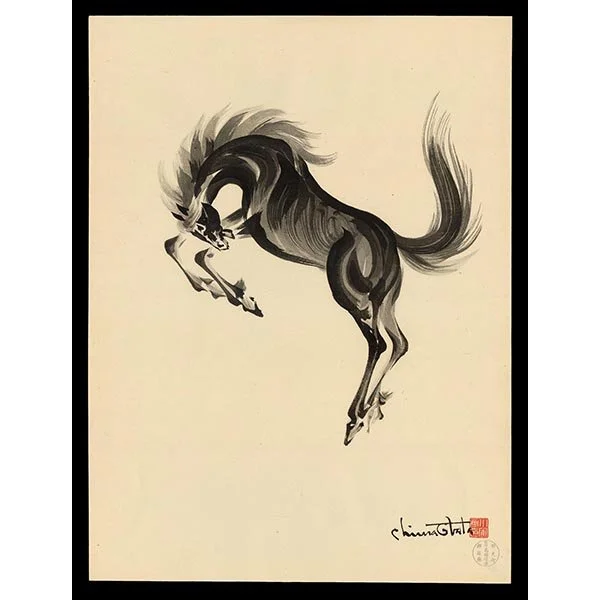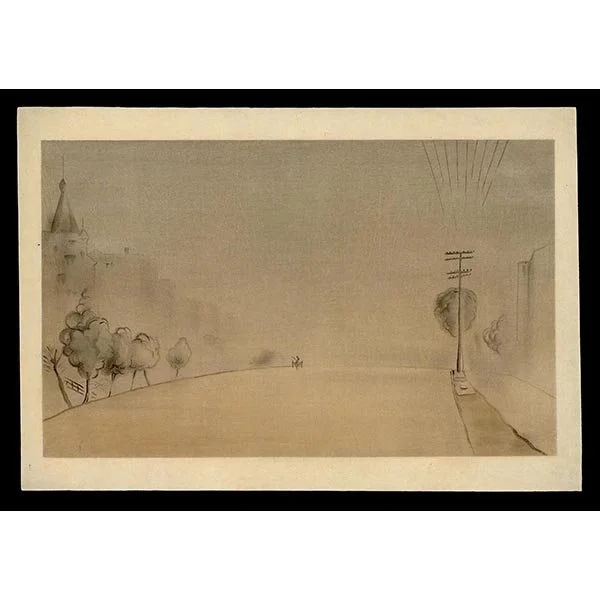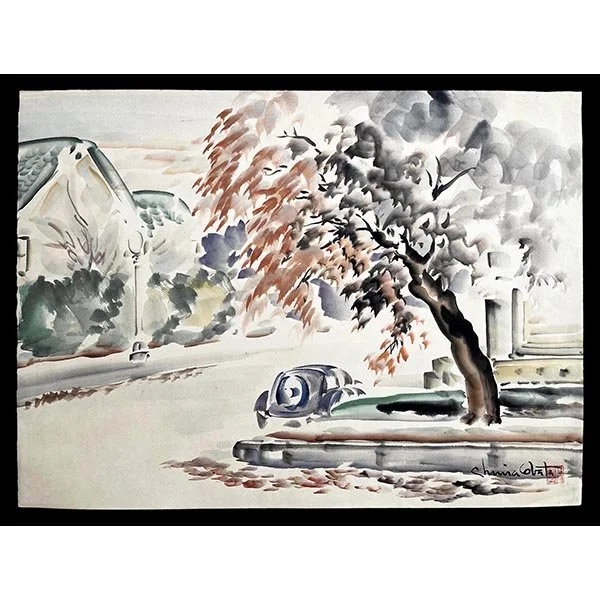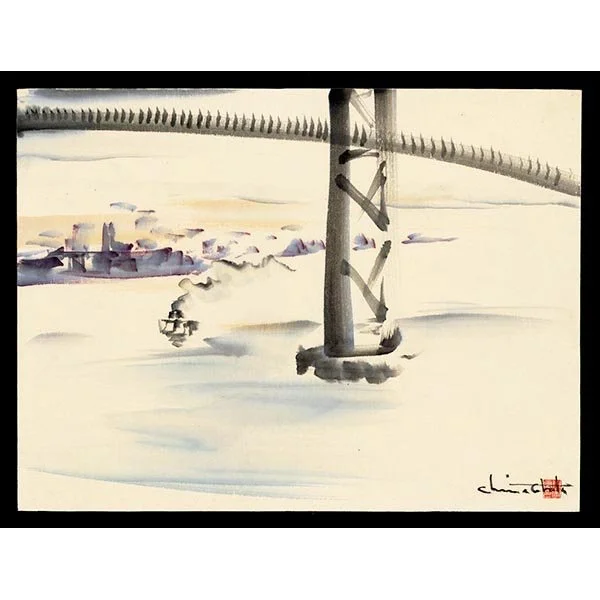Details
In 1928, Chiura Obata traveled to Japan to exhibit his designs produced on a recent visit to the Yosemite Valley region of the United States. This work, Lake Basin in High Sierra, was produced exclusively for the exhibition at Ueno, for which Obata won first prize. The exhibition's accolades garnered him the attention of Takamizawa, who went on to produce Obata's famous woodblock print series.
Even with a cursory examination, it is easy to see how Obata won the exhibition. The mountainous background with its receding glacier is a striking backdrop to a pristine lake that circles the bend of this design. The composition is striking for both the design elements and the various textures produced therein. Beyond the compositional elements, the work's skillful printing style with great bands of bokashi throughout is spellbinding. This design leaves little doubt why Obata went on to produce one of the most famous print series featuring this region of the United States.
Connoisseur's Note
It is important to point out that this impression is the exceedingly rare first state of the design. Obata produced it before he collaborated with Takamizawa in 1930. First-state impressions of this design are identifiable by the much larger paper size than the Takamizawa impressions. Obata stamped and signed the designs in the block and titled them in Japanese and English at the bottom. They have a more muted color palette, especially on the lakeshore, which conforms to the Japanese aesthetic sensibility of the time. These first printings were also protected by a tissue paper cover with a lengthy description in Japanese. The description does not mention Takamizawa, and the print itself has the marks of carver Baba Shizuka and printer Manjuro.
It is also important to note that Takamizawa utilized the original blocks from this design to produce his own Obata woodblock series. The only changes made were removing the artist's Japanese-style signature at the lower left, omitting the title at the bottom, and reformatting the design's color scheme to appeal to Western audiences. First-state impressions, such as this work, also bear a cartouche with enumeration in the bottom margin. This first state was only offered in Japan, after the exhibition, for a discrete period. Only a handful of these first state impressions are known to have survived. The print is in pristine condition with exceptionally sharp and vivid colors.













